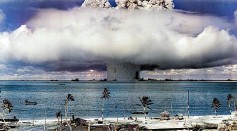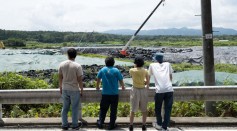Pacific

Two Mini Mola Seen Swimming Off Pacific Coast of Canada in Rare Footage

Legacy of Runit Dome: How Does the Nuclear Coffin in Marshall Islands Affect the Pacific?

Geologic Evidence Discovered: New Source Identified for Unusually Large Earthquakes, Tsunamis in Tokyo
‘Dumbo’ Octopus Living in Pacific Discovered; Researchers Say They Formed Habitat 7,000 Deep
Fossils & Bones Analysis Of Hawaiian Petrel Reveal How Food-Web Shift In North Pacific Leaving Impact On Their Existence
Deep Ocean Voyage Found The Evidence Of Hydrothermal Vent At The Bottom Of The Pacific Ocean
Oxygen Decreases In Oceans Affecting Not Only Aquatic Animals
Tropical Cyclone Pam Devastates Vanuatu in the South Pacific
On Droughts and Dust Bowls—California Looks Back to 1934
Most Popular

How Technology Is Changing the Real Estate Industry?

How a Plant-Based Diet Can Protect Against Breast Cancer: Insights from Nutrition Research

Study Reveals High Turnover in Scientific Research Careers: What This Means for Future Scientists

Why It's So Difficult to Lose Weight: The Biological Explanation Behind Obesity





